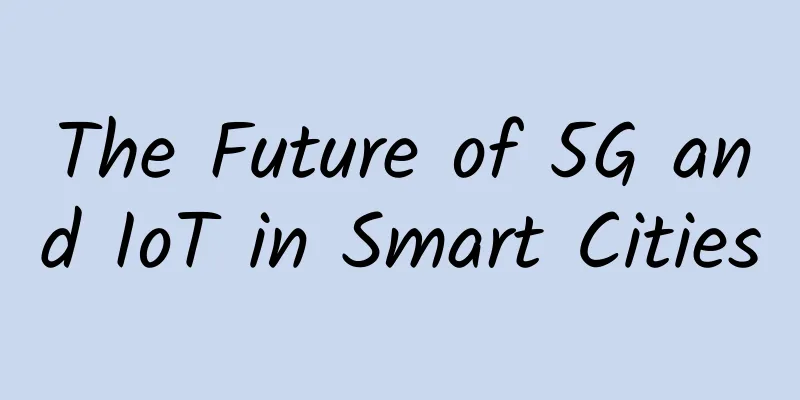How Should Operators Carry Out Cross-industry Integration?

|
According to the information disclosed by the 2018 National Industrial and Information Technology Work Conference, the Ministry of Industry and Information Technology has given a clear plan for the key tasks in 2018, and the central idea is to continue to increase speed and reduce fees. According to the plan of the Ministry of Industry and Information Technology, in 2018, the popularization of 100M broadband will be accelerated, and high-speed fiber-optic broadband networks will be fully covered in urban and rural areas, and the average mobile traffic charges will be further reduced. For operators, to increase speed and reduce fees, on the one hand, to increase speed, they must continue to increase investment in basic network construction and maintenance to achieve "faster" + "broader"; on the other hand, to reduce fees, they must continue to reduce the unit price of fees to increase users' sense of gain. In fact, the dilemma of operators, in addition to the requirements at the national policy level, is also the increasingly fierce competition within the industry, and the continued intensification of cross-industry penetration in the Internet industry.
Faced with the multiple pressures of increased investment expenditure, reduced revenue and cross-industry competition, operators must accelerate their transformation efforts. After all, faced with the reality of continuous price cuts, operators have increasingly limited room for price cuts in the future. Therefore, operators must extend the value chain, continue to increase cross-industry integration, and find new revenue and profit growth points to maintain the sustainable development of the enterprise. 1. Continue to consolidate the cross-industry foundation of operators The core advantage of operators is "pipeline". One end of the operator's "pipeline" connects users, and the other end connects merchants. It is through the "pipeline" that the Internet of Everything is realized. Therefore, the basic role of the operator's "pipeline" is irreplaceable. At present, with the continuous in-depth development of "large traffic + unlimited", the huge increase in traffic in the "pipeline" requires greater network capacity and carrying capacity. Especially before the arrival of 5G, it is unrealistic to multiply the network capacity and carrying capacity, which requires operators to continuously strengthen the "pipeline" operation capabilities. In terms of hardware, we will increase the construction, maintenance and optimization of 4G networks, continue to expand continuous coverage, and deepen deep coverage to ensure user perception while increasing the proportion of users staying on the 4G network. In terms of software, on the one hand, we will reduce network construction and optimization expenses by improving planning rationality and reducing overlapping coverage; on the other hand, we will improve network management support capabilities, explore and implement measures such as directional time-sharing and zoning, and dynamically adjust resources to prioritize data channel resource allocation in high-value areas, and improve network utilization efficiency by reasonably diverting network load. We believe that the operator's technical experts can solve this problem. 2. Actively promote ecological co-creation Operators have a huge user base, network assets throughout the entire network, and end-to-end connection capabilities. In China Mobile's "Big Connection" strategy, ecological co-creation is listed as one of the top ten projects. Ecological co-creation means adhering to the concept of "open sharing, cooperation and win-win" to create a mutually beneficial and harmonious ecological system. This fully shows that operators have fully realized the importance of ecology. Since it is co-creation, it is necessary to first change the closed thinking of operators and say goodbye to the past business habits of doing everything by themselves. Since it is co-creation, there can be cooperation, equity investment, mergers and acquisitions and other models. In addition, operators should actively learn from the development experience of foreign operators and mainstream Internet companies, increase foreign investment, focus on cultivating new formats, and expand the extension of industry development. By continuously strengthening their core advantages and building an ecological platform based on their core advantages, the competitiveness of the enterprise itself and the industry as a whole can be consolidated. At present, the three major operators have successively involved Internet subsidiaries and investment companies. In fact, Internet subsidiaries are aimed at business + service innovation, and investment companies are oriented to the direction of replacing self-creation with purchase to achieve the direction of rapid formation of business capabilities. The goal of ecological co-creation of operators should focus on innovation as the starting point to increase the barriers for opponents to copy and imitate; with the goal of enhancing cross-industry integration, by extending the value chain of "pipelines", focusing on creating open and shared new formats, and continuously promoting the development of resource-saving economy with low input and high output in the industry. 3. Increase content innovation According to calculations, the value of traffic, text value>image value>video value. Under the effect of "large traffic + unlimited", the huge increase in traffic in 4G networks, especially video traffic, may not be high-value traffic. Increasing volume without increasing prices will inevitably lead to problems such as no increase in volume and mismatch between volume and revenue. What's more, large traffic + unlimited volume + continuous price cuts have forced the value of traffic to become lower and lower. It is difficult to support the sustainable development of operators by simply collecting "pipeline fees" or "tolls" in the "pipeline". SF Express, which started out as an express delivery company, began to sell goods, and JD.com, which started out as a seller of goods, engaged in self-operated warehousing and express delivery. In fact, they are all transformations after their main business is too single, their growth encounters a ceiling, and their development encounters a bottleneck. It's just that some are actively seeking change, and some are going with the flow. In comparison, operators are more like express delivery companies. Selling goods is bound to be the general trend, and it is also forced by the penetration of Internet industries. As an operator that started out as a "pipeline" operator, what business should it sell or what business and services should it innovate? Here is a principle and two standards. One principle is business + traffic, service + traffic, or content + traffic, which can be summarized as 1+1>1. The two standards are: one is high value, which is simply good quality and high quality, whether it is high traffic + high value or low traffic + high value products, or rare and valuable business, or both, which can be summarized as 1+1<2; the other is high stickiness, which emphasizes enhancing user stickiness, reducing user switching needs, building a solid barrier for users to leave the network, and obtaining the user's lifetime value by reducing user mobility, which can be summarized as 1+1>1. Whether it is actively increasing revenue or passively reducing customer acquisition expenses, for operators, it is an increase in benefits. 4. Focus on developing ICT business The development of open integrated information service business (ICT) and the use of the rich experience of operators in the field of network and information technology to provide customers with professional IT services are the general trend of industrial informatization. From the perspective of increasing the connection points with users, the current ICT is mainly divided into two business types: system integration and third-party product sales, in addition to operation and maintenance services. For ICT business, business innovation and integration are needed from multiple dimensions such as cloud computing, big data and the Internet of Things. Taking the government and enterprise customer projects as an example, if we obtain the user's system integration project, we also obtain all the outlets for the user's information application. On the one hand, it blocks the user's off-network channel and improves user stickiness. On the other hand, by increasing the connection points, it increases the business buying points. As for the sales of third-party products, on the one hand, we make full use of the "pipeline" advantage, and provide end-to-end behavior analysis and resource matching by stratifying users by age, using business classification, real-time location, online time, business usage, and access type. For example, in location services, by providing location service functions such as "nearby search", information such as supermarkets, restaurants and cinemas is loaded to recommend third-party advertisements. In fact, the above two points are the key breakthrough points for the development of ICT business. 5. Actively extend to basic industries The Internet of Everything will realize the connection between people, people and things, and things and things. Among them, people and things and things and things are exactly the businesses that operators need to focus on developing in the future. Whether it is the connection between people and things or the connection between things and things, operators need to actively expand their business to the manufacturing industry, promote the application of technologies such as the Internet of Things, big data, and cloud computing to continuously promote the design, manufacturing, marketing and maintenance of the manufacturing industry, as well as the development of customization towards intelligence, and promote the mature development of smart manufacturing. In terms of business development, we insist on advancing from easy to difficult, from the outside to the inside, and from the outer layer to the inner layer, and realize the upgrade to the application layer. Starting from product promotion, starting from user participation in design, starting from managing manufacturing processes and processes, starting from monitoring the production environment, all the way to human-machine sensor intelligent interaction. Accelerate the promotion of basic industries such as agriculture, manufacturing and service industries to move towards intelligence. In fact, the integration of operators + manufacturing is the strategic plan that the manufacturing industry 2025 focuses on promoting; smart agriculture is actively advocated by the country. "Internet +" is at the forefront of social value. How to promote operators to accelerate cross-industry integration to form "operator +" is a major issue that the three major operators must focus on solving in the future. |
<<: What are the differences and connections between data centers, cloud computing, and big data?
>>: In the 5G era, what is the way out for the three major operators that are crying poor?
Recommend
EPM business-finance integration is gaining popularity. How does FONE break through the boundaries of financial digitalization?
Traditional financial services are no longer the ...
DiyVM: 50 yuan/month - 2GB/50GB/10M/Hong Kong CN2/US CN2/Osaka, Japan optional
How about DiyVM? The Chinese host provider was es...
Why don't we use HTTP directly for calls between services but use RPC?
[[313073]] What is RPC? RPC (Remote Procedure Cal...
TCP, it’s finally here!
[[394208]] Previous articles have been talking ab...
5G and edge computing are a perfect match
Enterprise IT leaders have heard a lot about edge...
IT spending priorities for 2020
The role of the CIO has become a transformational...
Sina Weibo Hou Qinglong: Weibo LNMP architecture in the new era
【51CTO.com original article】Just last week, the W...
The battle for future wireless network communication technology
Wireless communication is closely related to our ...
Blockchain: a panacea for wealth or deadly arsenic?
Blockchain has been talked about a lot recently. ...
Green operation, data center still depends on automation
Power is the lifeline of data centers, and electr...
Sangfor launches sub-brands - Intelligent Security and Cloud IT, with two major businesses running side by side
[51CTO.com original article] On November 18, at t...
5G is here, what can 5G do?
5G is here. In order to let everyone know clearly...
Tencent Cloud Double 11 Early Purchase: 2C4G8M cloud server only 70 yuan/year, renewal can get coupons
Tencent Cloud has launched the Double 11 warm-up ...
We will bear the consequences of irresponsible criticism of operators.
There was a problem with the telecom broadband at...
RackNerd Easter promotion starts at $10.78/year, multiple data centers in Seattle/New York/Dallas, etc.
I just shared the summary of RackNerd's histo...
![[11.11] CloudCone: $11.11/year KVM-1GB/40GB/2TB/Los Angeles Data Center](/upload/images/67cac24ccb753.webp)








